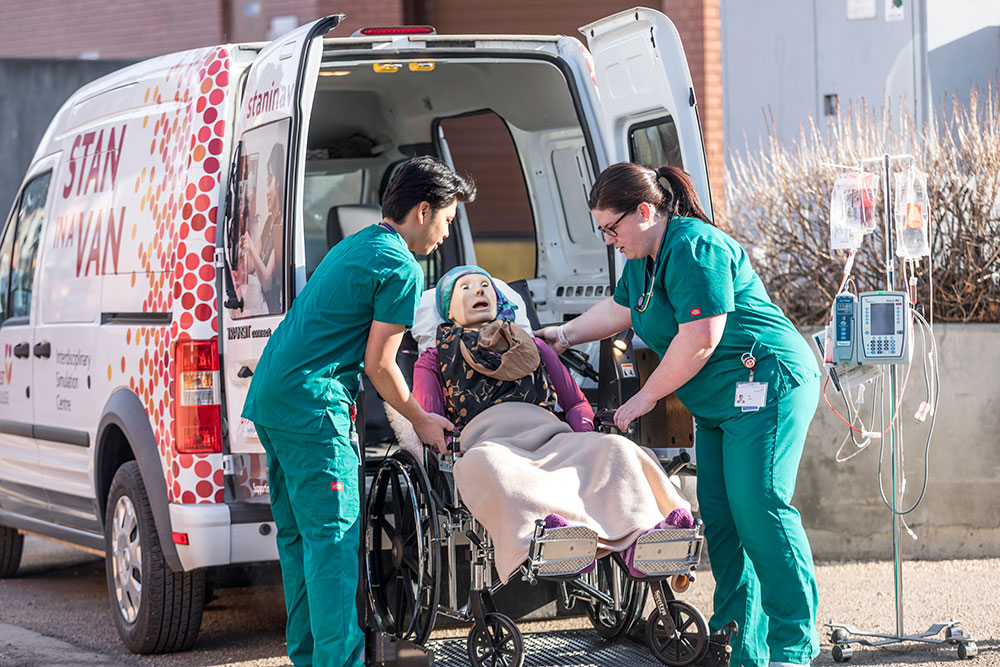Equipment
Equipment available in the Olson Centre for Health Simulation includes:
- four simulation rooms with two beds each and four debriefing rooms
- each room has the capacity to simulate a general inpatient unit, or can be re-arranged to accommodate different scenarios for different disciplines
- a range of culturally diverse, high- to low-fidelity manikins, including nine adults, one pediatric, and three infants
- various modalities including high-, medium-, and low-fidelity manikins, as well as standardized patients (actors)
- video and audio recording for learning purposes
Technology
360-degree tours
We can custom build and create 360 degree immersive experiences that can be as basic as a tour or more comprehensive with interactive pathways for learners, choose your own adventure experience that provides feedback about learner performance.
Virtual Dementia Tour
The Virtual Dementia Tour (VDT) is an original, ground-breaking, evidence-based, and scientifically proven method of building a greater understanding of dementia. The VDT uses patented sensory tools and instruction based on research conducted by P.K. Beville, M.S., a specialist in geriatrics and the founder of Second Wind Dreams.
During a Virtual Dementia Tour experience, trained facilitators guide participants outfitted with patented devices that alter their senses while they try to complete common everyday tasks and exercises. The Tour enables caregivers to experience for themselves the physical and mental challenges those with dementia face, and use the experience to provide better person-centred care.
Virtual reality
When it comes to critical nursing tasks, technologies are opening opportunities for health-care students in modern, hands-on virtual reality settings. NorQuest College practical nursing students are using award-winning virtual reality experiences that immerse the senses in a safe environment. This technology gives students a chance to see, hear, and move while practicing their skills and critical thinking in a virtual clinical setting, one example being our insulin administration scenario.
By designing simulated environments, students can perform step-by-step procedures. Feedback provided at the end of the scenario allows them to repeat the scenario and perfect their skills before interacting with a real patient. The use of this technology is an incredible tool in building both muscle memory and assisting learners to develop confidence.
Robotic animals
These robotic animals are used in a variety of scenarios including dementia-related care as well as our Veterinary Office Assistant program. Their interactive technology has built-in sensors and speakers that respond to motion and touch, and can respond to voice. Their heartbeats can be felt which increases the authenticity of the experience for our students.
Stan in a Van
Stan in a Van is a mobile simulation unit. It features Stan (the standard man), Fran (the woman), and Cisco (the baby). The van is fully equipped to bring the benefits of the Olson Centre for Health Simulation to our students in off-campus and regional locations so they have access to the same technology that our Edmonton campus students do.

Olson Centre for Health Simulation
10215 108 Street NW
Edmonton, AB T5J 1L6
Appointments can be made in person or by phone.